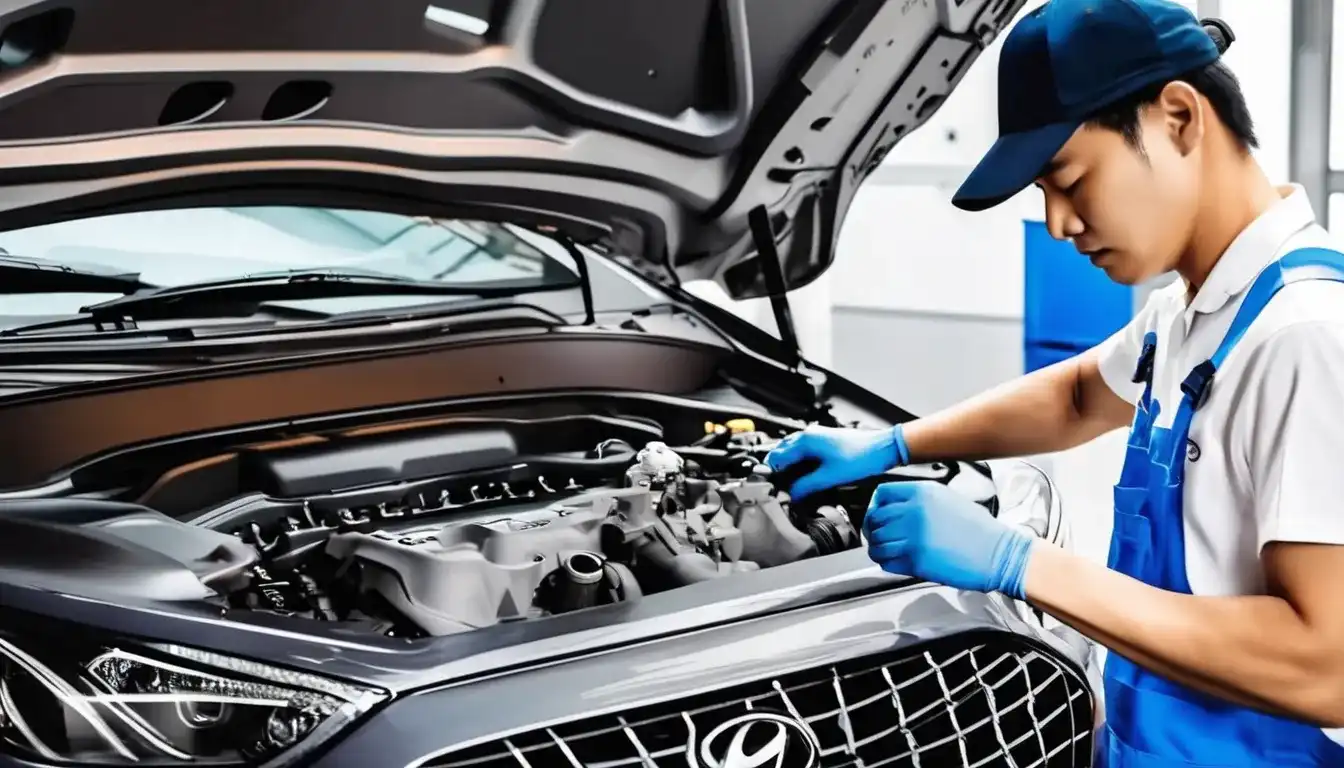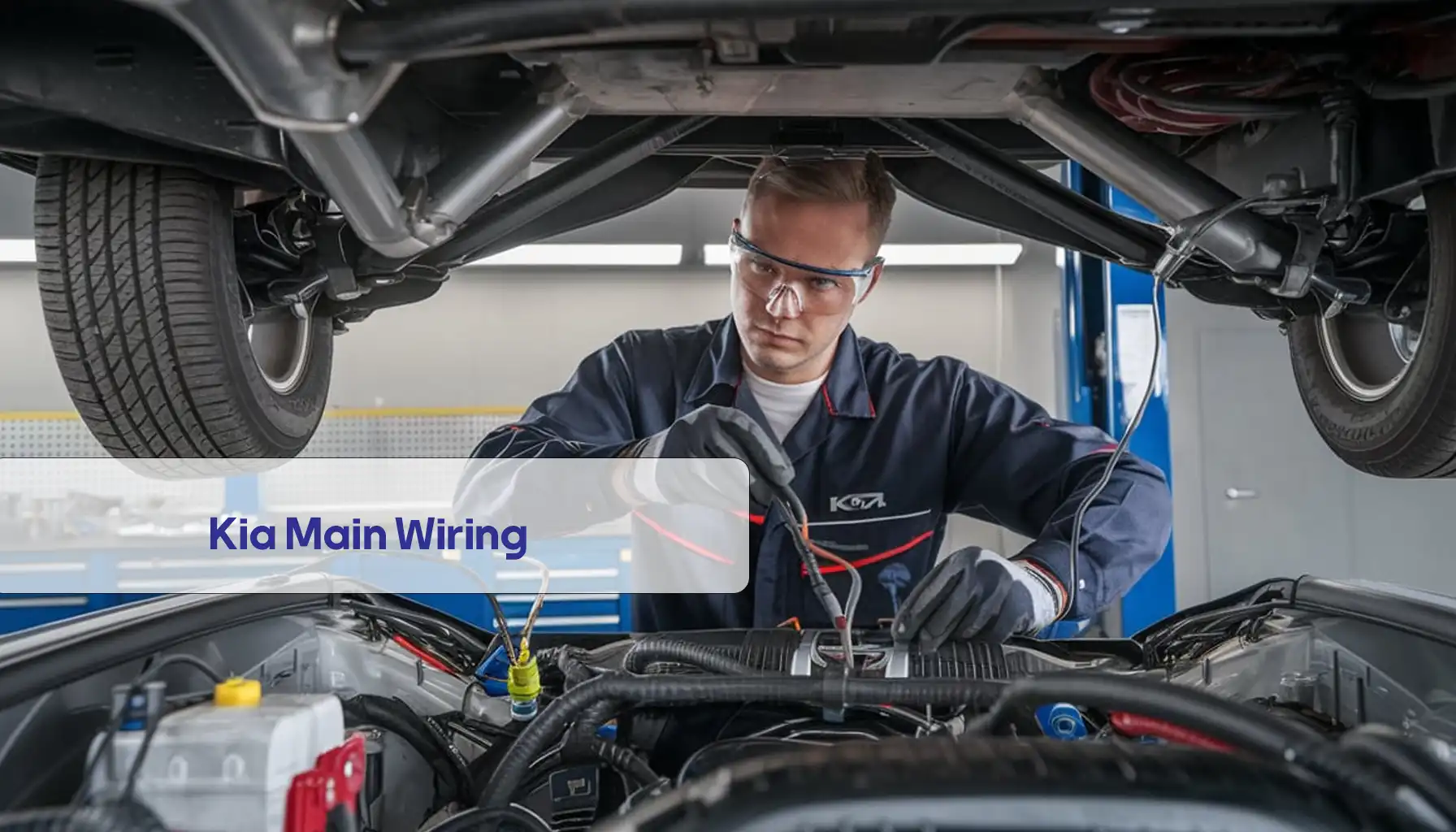Hyundai owners in Dubai, UAE, and the wider Middle East face a harsh environment, and understanding vehicle maintenance is of vital importance. Especially with key components like the Hyundai brake fluid reservoir, it’s important to keep your Hyundai’s braking system running at its best-not just so the ride is as smooth as possible but also for safety on the road. The following blog post provides detailed information about the Hyundai brake fluid reservoir for readers who want to understand how it works, or if there is suspicion of a leak, or how much it may cost to replace.
We at Arsintrading take pride in keeping a healthy stock of high-quality Hyundai brake disks, which are designed to grant safe and reliable braking for any Hyundai model. The leading brands of the industry coupled with various models of Hyundai, including Sonata and Tucson, make them long-lasting and greatly improve the performance. Whatever model of Hyundai you use, rest assured that Arsintrading has it. Buy Hyundai brake disk in Dubai today to assure your vehicle’s braking system of optimal condition.
What is Hyundai Brake Fluid Reservoir?
One of the most crucial parts in every vehicle’s braking mechanism is the reservoir of brake fluid. It is designed for holding brake fluid that works on the mechanism of braking. In most Hyundai vehicles, this reservoir is made of plastic that resists deterioration and is attached on or near the master cylinder of the car. Brake fluid is a kind of hydraulic fluid whose purpose is to assist in transmitting force from the pedal to the brake pads for effective stopping of your car.
In a nutshell, this small yet important component acts as a container of liquid for your brake. And if the level of brake fluid is not up to the mark or the mechanism of the reservoir is not functioning correctly, then braking efficiency may become so poor that it may risk your life and that of your passengers.
Where is the Brake Fluid Reservoir Located in a Hyundai?
In most models of Hyundai cars, the reservoir of brake fluid is usually located underneath the hood, towards the rear in the engine bay, just atop the master cylinder. Depending on the model, it could be to either the left or right-hand side for easy access by a driver or mechanic to perform a visual inspection easily. The reservoir is typically semi-transparent so you can check the level of the fluid without having to open the cap.
This placement in Hyundai models, such as the Elantra, Sonata, or Santa Fe, makes for rapid fluid inspections and refills to save time and discomfort for Hyundai owners in the Middle East. Knowing the location of this part becomes very relevant, especially if you are considering a DIY top-up of brake fluid.
How to Know If the Hyundai Brake Fluid Reservoir Is Leaking
A leaking Hyundai brake fluid reservoir can be an ominous affair. Symptoms of a leak include a low fluid level, visible fluid on the ground under your Hyundai, or a spongy pedal feel. The leaks may be due to cracks in the reservoir itself, worn-out seals, or attached hose issues. Brake fluid is typically clear in color or slightly yellow, so you should be able to identify it on the ground without too much issue.

In this case, if you suspect any sort of leak, then you need to have the area around the reservoir and master cylinder inspected to determine where the problem is lying. Consistently low fluid levels – even after topping it up – might also indicate a leak, in which case it will be time to get the help of a mechanic before things get worse.
Hyundai Brake Fluid Reservoir Replacement Cost in Dubai
The cost of replacing a Hyundai brake fluid reservoir in Dubai varies according to the model type and complexity of the reservoir design, different service providers, or workshops. The prices of most Hyundai models range from AED 200 to AED 600 for the parts alone, and the charge for labor may add AED 100 to AED 300 depending on the workshop. To make sure this replacement works in Dubai, genuine Hyundai parts are needed.
If buying Hyundai spare parts online, make sure to purchase from genuine and trusted sources to avoid counterfeit spare parts. As far as brake systems are concerned, nothing short of quality will do, especially in the quite unforgiving Middle East climate.
For Hyundai chassis parts, Arsintrading is the ultimate online center over Dubai and the Middle East. Our product portfolio covers premium parts manufactured to meet Hyundai’s high standards for safety and performance and keep the structural integrity and road performance of your vehicle intact. You can buy Hyundai chassis parts in UAE from Arsintrading for assured reliability and superior quality to guarantee a smooth ride.
Clean Hyundai Brake Fluid Reservoir
Cleaning the Hyundai brake fluid reservoir will avail a better life of the braking system in your Hyundai. With time, it may build up some debris and residue inside the reservoir, which can affect the quality of brake fluid. Here is a simple and safe way to do this:
1. Keep your car on level ground and make sure the engine is turned off.
2. Open the hood and locate the reservoir of the brake fluid.
3. Unscrew the cap on the reservoir carefully. Be very careful not to spill any brake fluid because it is corrosive.
4. Take a lint-free cloth or a special brake fluid suction tool and remove any debris or old fluid from inside the reservoir.
5. Fill with new brake fluid according to your Hyundai specifications.
A clean reservoir helps in the superior functionality of brakes. Hyundai recommends changing brake fluid regularly depending on usage and driving conditions, preferably at 30,000 to 50,000 kilometers.
What Happens if the Hyundai Brake Fluid Reservoir is Overfilled?
Overfilling the reservoir containing the brake fluid can lead to a host of issues since brake fluid requires just a little extra room for expansion when it heats up. If in such instances the reservoir is too full, excess fluid can leak out and may even damage other surrounding components. It also can cause brake fluid foaming or aeration which depletes braking effectiveness.
First of all, in a braking system, there is a need to maintain balance. If the reservoir happens to be overfilled, then with the help of a suction tool, you must take out the extra fluid. Well, this simple kind of prevention can save the integrity of your brake system for long miles of safe driving.
How to Remove a Hyundai Brake Fluid Reservoir from the Master Cylinder
If you ever consider the replacement of the Hyundai brake fluid reservoir yourself, here is a general description of its removal from the master cylinder. This process might be a bit different for certain models; it is highly important to follow the service manual for your particular Hyundai.
1. Above all, make sure that your car is parked safely and on even ground.
2. Open the hood and locate the brake fluid reservoir.
3. Utilize a suction tool and extract as much brake fluid as possible inside to avoid spillage.
4. Loosen the hoses from the top of the reservoir carefully. Take note of the position of all the hoses for reinstallation.
5. Look for bolts or clips that hold the reservoir onto the master cylinder and unscrew or unclip them carefully.
6. Pull the reservoir up and off the top of the master cylinder and then remove it from the engine bay.
If not comfortable working with cars, then you will want to consider having a professional replace this for you. Reinstallation needs to be done in such a way that there will not be any leaks, and the entire braking system needs to function just right.

Why Regular Maintenance of the Hyundai Brake Fluid Reservoir Matters
Since Dubai and the Middle East have high temperatures, every owner of Hyundai cars should be concerned with regular check-ups and maintenance of the brake fluid reservoir. These scorching temperatures and dirty environment can seriously affect the overall performance of your vehicle’s brake system over time and make the maintenance of the brake fluid reservoir even more crucial. A well-maintained brake fluid reservoir ensures that your braking system is operating properly and reduces the possibility of brake failure, thereby increasing the driving safety of your car.
With Hyundai vehicles, genuine spare parts coupled with regular checks go a long way in their sustainability and performance. Invest in a quality brake system maintenance; the returns will be assured in vehicle performance and reliability, especially for daily drivers in the harsh climates of Dubai and the wider Middle East.
Conclusion
Due to the fact that a well-operated and maintained brake fluid reservoir ensures that the vehicle is both safe and reliable, it is very important for Hyundai owners in Dubai to understand both its function and requirements for maintenance. From identifying leaks to understanding replacement costs, these insights are critical to anyone who wants to do effective maintenance of the Hyundai vehicle’s braking system. With regular maintenance, cleaning, and high-quality replacement parts, the brake fluid reservoir operates at the highest level and enables one to enjoy a smooth and safe drive.
By keeping up with your Hyundai’s brake fluid reservoir, you’re investing in a valuable component that will continue to support your safety on the road. If you happen to be from Dubai or the Middle East, then rely on a well-trusted supplier for Hyundai spare parts for your car, as it will keep the vehicle in a good state and also help to build confidence while driving.
FAQ
Q: What type of brake fluid should be applied to a Hyundai Sonata?
A: The DOT 3 or DOT 4 high-quality brake fluid, recommended by the company which manufactured your vehicle, will serve well in a Hyundai Sonata. This kind of fluid works fine with Hyundai’s braking system and offers smooth braking performance along with good durability.
Q: What is the recommended type of brake fluid for a Hyundai Tucson?
A: DOT 3 or DOT 4 is generally used in Hyundai Tucson. The use of the proper type of fluid guarantees effectiveness in the braking system, especially when driving under harsh conditions in Dubai and the Middle East.
Q: Is the Hyundai brake reservoir hydraulic?
A: The Hyundai brake reservoir is part of the hydraulic braking system. It houses hydraulic brake fluid, which transmits pressure into turning either slowing or completely bringing the car to a stop. Proper fluid level and regular maintenance on this hydraulic component are very safety sensitive.
Q: How can I check the Hyundai brake fluid reservoir?
A: The procedure for checking the level of brake fluid in your Hyundai is to look under the hood for the reservoir of the brake fluid. On most Hyundai models, the reservoir is semi-transparent, and you can check the fluid levels without necessarily opening the cap. The fluid level should fall between the “MIN” and “MAX” marks on the side of the reservoir. If low, it needs to be topped up with the correct type of brake fluid for optimum braking performance.



